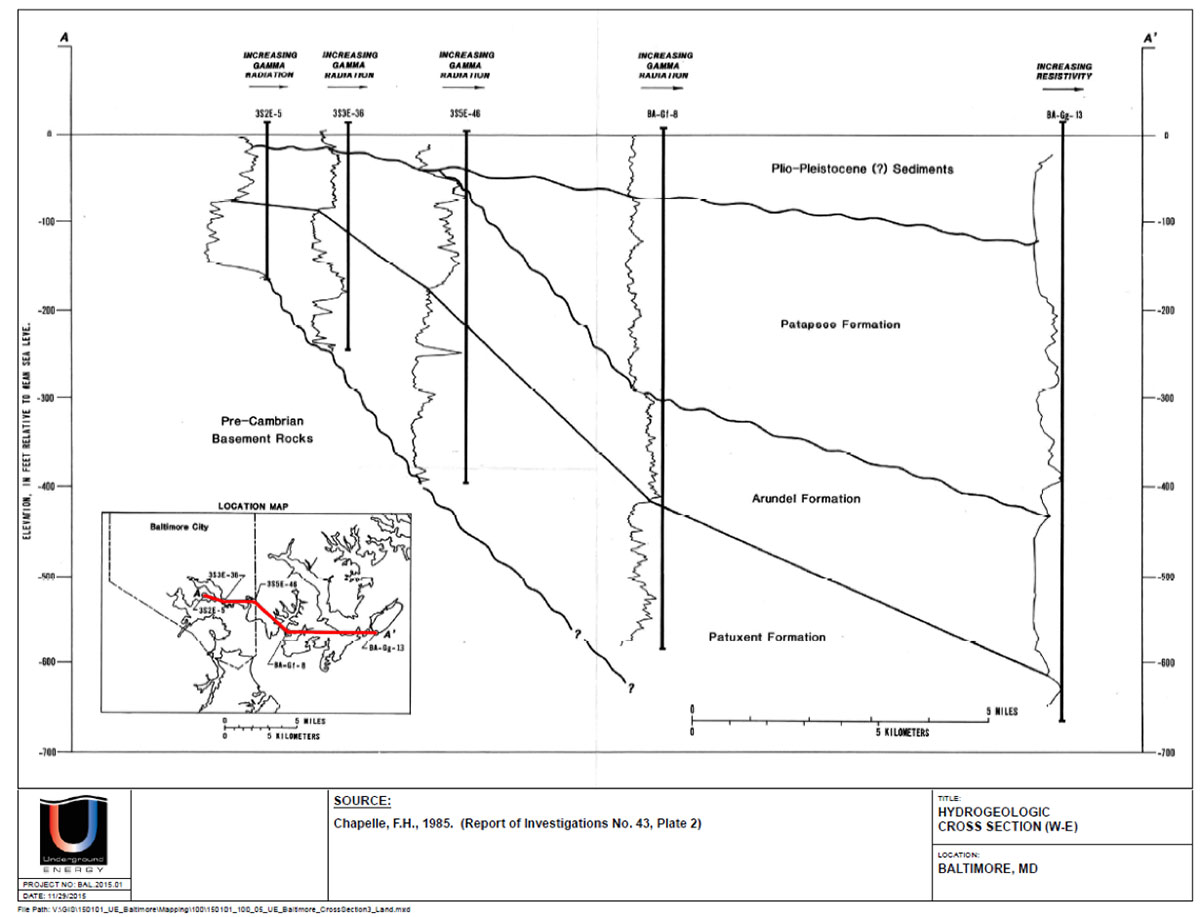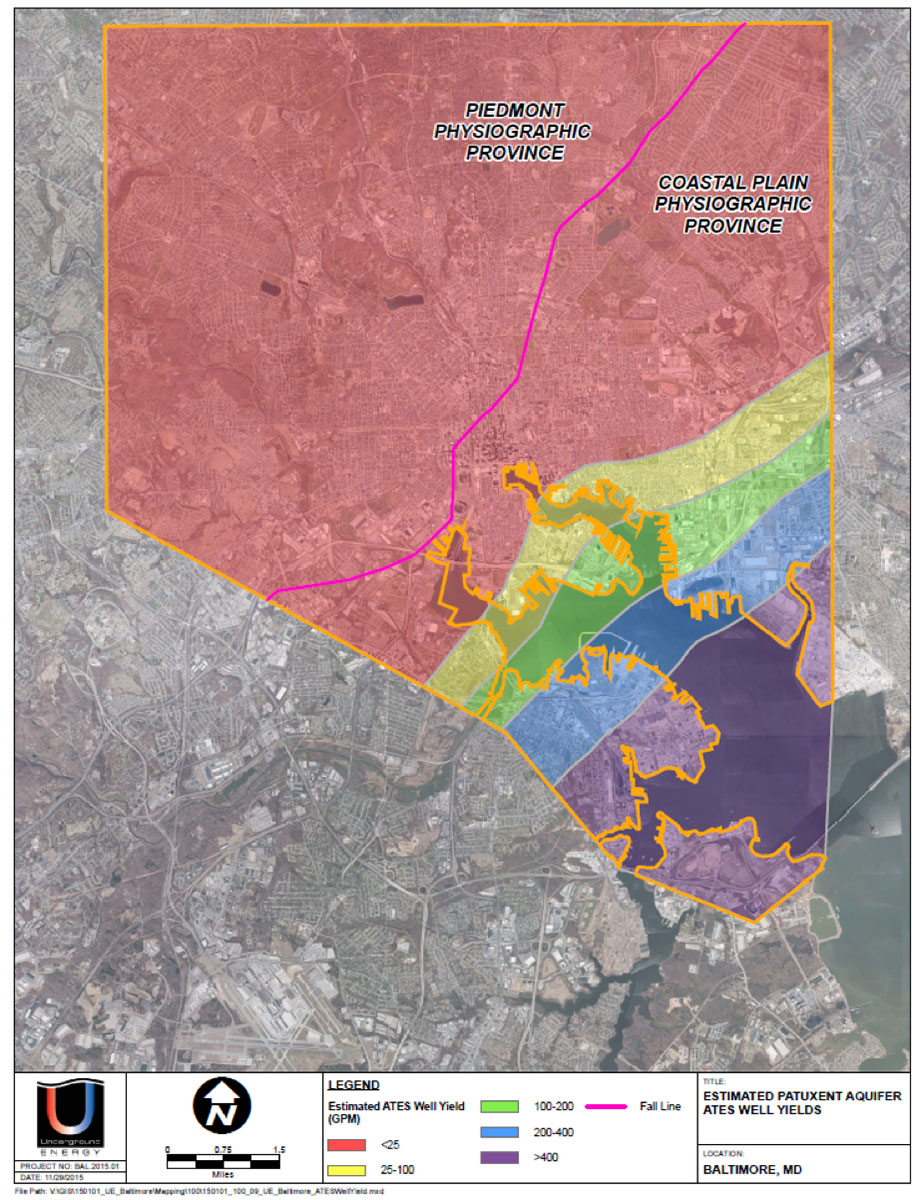Regional ATES Feasibility Screening
Underground Energy, LLC performed a preliminary regional feasibility screening of Aquifer Thermal Energy Storage (ATES) in the City of Baltimore. ATES, which is used extensively in the Netherlands to sustainably heat and cool large buildings, requires favorable climatic and hydrogeologic conditions. Baltimore’s climate is suitable for ATES, and portions of southern Baltimore have suitable hydrogeologic conditions for ATES.
The objective of the study was to perform a desktop analysis of aquifer suitability and capacity within Baltimore and to assess the regulatory process associated with ATES project development.
The Patuxent Aquifer beneath southern portions of Baltimore was found to have adequate capacity to support multiple ATES projects, and the high expected ATES well yields can help meet the thermal needs of large development projects. State and federal regulations were found to be amenable to ATES project development.
The southern third of Baltimore is underlain by Coastal Plain sediments that include the Patuxent Aquifer, the focus of Underground Energy’s study. The Patuxent Aquifer becomes deeper, thicker and more transmissive in a southeasterly direction (see Figure 1). Estimated ATES well yields depicted in Figure 2 are shown to increase to the southeast to greater than 400 gpm; higher yields will generally be more favorable for ATES development, as larger thermal loads can be met by fewer wells. However, because the Patuxent Aquifer becomes deeper as estimated well yields increase, the depth and resulting cost of an ATES well will also increase. Site-specific design considerations will govern the tradeoff between well yield, well depth and the number of wells needed to meet thermal loads for a given project.




